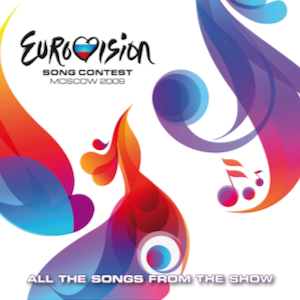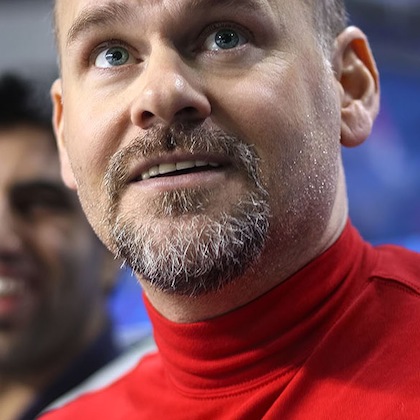In this article John Egan unpacks how ORF have maximised the opportunity to raise the profile of both Vienna and Austria. Their “alle Österreich“ strategy have turned two weeks in May into a national celebration…and a masterful marketing promotion.
Perhaps you’ve heard the legend of Estonia. With Tanel Padar, Dave Benton and 2XL having earned a surprise victory in the 2001 Eurovision Song Contest, the folks in Estonian television were faced with a dilemma. With a rather constrained budget to produce the 2002 Eurovision Song Contest in Tallinn, they convinced Enterprise Estonia to shift budget from economic development and tourism promotion to the host broadcaster, ETV.
Their strategy was simple: leverage three hours of prime Saturday night airtime across Europe to rebrand Estonia. Their argument was that hosting Eurovision Would offer greater market penetration than advertising buys across more than twenty European markets.
Economic development was certainly integral to their tack, but their goal was as much cultural as economic. Since re-asserting its independence in the waning days of the USSR, the re-established Estonian government equally pursued a shift in the historical discourse. Rather than being a Baltic or ex-Soviet people, Estonians viewed themselves instead as fundamentally Nordic: their market research showed otherwise.
Tallinn was the first Eurovision host from “new Europe”, the former communist, ex-Yugoslavia, and ex-Soviet successor states. Aside from the budget concers some doubted whether their nascent public broadcaster could produce a show of the calibre of Eurovision (clearly they could). But the approach of Estonia to hosting was to reboot the Estonian brand.

Source: Wikimedia
In many respects their strategy has worked, certainly it has with respect to the Eurovision Song Contest. Today Estonia is now firmly ensconced in the Scandanavian voting pod for semi-final allocation. Given the growth in tourism in the 15 years since “Everybody” triumphed in Copenhagen, brand Estonia’s reboot has been a clear success.
How then, does the notion of brand—for the host city and country—come into play when organising the Eurovision Song Contest? It is usually rather prominent, as it turns out. In this article we take a look at Brand Vienna. But first, let’s take a look at how host branding has featured between Tallinn and Vienna.
Reboot, Rewind
The host cities that followed 2002 featured a number of first-time victors and hosts. In the noughties, Riga, Istanbul, Helsinki and Belgrade each hosted their inaugural Eurovision, more or less emulating the Tallinn strategy of rebooting their brand.
In addition to the tourism profile offered through the live broadcasts, these cities also (like Tallinn) embedded the Contest into city life. Large public viewing areas, an ubiquitous look and feel—the graphics, fonts and theme for each host—and a bevvy of volunteers were deployed as hundreds of brand emissaries. In addition to producing a quality light entertainment programme, the organisers understood that the press and fan visitor experience was an equally important opportunity. Having fans and press singing your city’s praises can have a significant impact on brand penetration.

Source: Wikimedia
Over the next several Contests, a different sort of host city branding emerged. Moscow adopted a rewind strategy, chosen to assert the Russian grand cultural tradition. As a showcase for Moscow this made a lot of sense, when your goal is to underscore, rather than create, a brand presence. For the Germans, Norwegians, Danes and Swedes, the brand was about asserting both an understanding of their culture and specific notions of europeaness. Each focussed on an articulation of a specific sense of European values and practices—arguably in pointed contrast to the EBU active membership’s eastern flank.
After the second World War Austria was divided into four segments (British, French, Soviet and American), much like Berlin. In fact, Austria’s independence from the Soviet sphere wasn’t confirmed until 1955. Subsequently Austria has been a geopolitical bridge between East and West. Let the brand tie-ins begin!
Wilkommen in Wien
Conchita’s victory with Rise Like a Phoenix was Austria’s second win, but the 1966 and 2014 Contests were rather different beasts. Merci Cherie received 5 points (then the top score a jury awarded any entry), from four of seventeen countries. While nine countries award some points to Udo Jurgens, seven awarded the Austrian entry null points: almost half of the juries.
Fast forward and the game has changed entirely since the 1960s–as has Austria. Last year Conchita vanquished 36 other competitors in both a semi-final and Grand Final. Doing so required strong support from both the televoting public and professional juries. In the end Austria earned points from all but four countries, including 13 douze points. Conchita’s win was much more comprehensive: it had to be in this much larger scale Song Contest.
A much bigger Contest can also mean a much higher potential profile for the victor—and the host city the following year. Compared to other hosts from the last decade Austria is a bit larger in terms of population (almost 9 million residents) than Denmark, but dwarfed by Germany, Russia and Ukraine. However its cultural footprint is massive: Vienna was the seat of power of the Holy Roman and Austro-Hungarian empires, controlling much of today’s central and eastern Europe. With empires come language and culture. Don’t the size of today’s Austria fool you: this is a cultural superpower, with Vienna its cultural capital.
However the influence of Austria waned significantly as the 20th century began. The challenge—and opportunity—for the organisers of this year’s Eurovision Song Contest was to effectively exploit this grand cultural tradition whilst repositioning itself as an archetypal centre of cosmopolitan Europe.
Rewind: The Traditional
Vienna’s brand strategy seeks to both embrace its pre-hosting profile whilst expanding it: building a bridge between east and west, and the past and present. Vienna musical tradition spans centuries: the re-introduction of the orchestra at this year’s Contest (for the opening only, alas) might have made many a fan’s heart flutter, but it also plugs directly into the classical music canon of Beethoven, Brahms, Mozart, Schubert and Strauss.

Source:EBU/Eurovision.tv
The segments in the semi-finals on Austrian contributions to literature, science, popular culture and sport work similarly. We would expect to see winter sports on display: Austria is a winter sport powerhouse and an alpine nation. Even the throwaway line about the dog named Schwarzenegger during the interval offers a tie-in with a common association of things Austrian. Validating rather than disrupting their pre-hosting brand makes sense. Expanding it is the next logical step.
Fast Forward: Cosmopolitan Europe
The four faces of Vienna 2015 are each purposeful choices. Mirjam Weichselbraun, Alice Tumler and Arabella Kiesbauer represent multilingual, multicultural Austria (and Europe). Conchita has maintained a significant role besides being current champion in her hosting duties for the green room. Conchita is rather impressively saturating Vienna: Conchita announcing tram stops; Conchita in advertising for banks, retailers and culture. And Conchita welcoming you Vienna in the airport and train stations. Most obviously she represents the LGBT community: more broadly and decidedly modern Austria.

Source: City of Vienna
The economic profile of the event is unapologetically modern European capitalist. The brand tie-ins at the event itself feature several pan-European and regional heavy hitters. All sorts of retailers have embedded the Building Bridges theme into their displays. Austria is open for and to business.
Speaking of capitalism…the re-emergence of the Contest as a hit producing event has given it some “cred” in terms of music—whether the hits are the winning entry or not. While the UK and French markets continue to be less open to Eurovision entries (including, it must be said, their own), it is now routine for a handful of entries each year to appear in the upper reaches of the sales charts. Already this year we are seeing another uptick in iTunes sales for several entries. A song contest that produces music sales increases can only be a good thing.
Finally green is a theme this year. Vienna 2015 features on-site recycling, including a stage that will be completely recycled after the Contest.
Enhanced For Your Viewing Pleasure
Vienna and Austria offer a strong example on how to do maximise the opportunity of hosting the Contest. Rather than trying to replicate another host’s branding strategy, they have built something uniquely Austrian—yet resonant more widely. There are elements of a rewind to times past and fast forward to the presence–and future.
There is a great deal of coherence between the tie-ins with government, transportation, and private sector. In terms of “look and feel” (the design element of the branding strategy: colours, fonts, still and animated media), Building Bridges offers a palate that adapts to partner stakeholders own brands readily. The Austrians could have stuck with a red and white palate (the colours in their flag); instead they went with something much less limiting. It is paying off: the live shows and the various print representations of Vienna 2015 enhance the event, rather than distract from it—something earlier hosts did not achieve.








